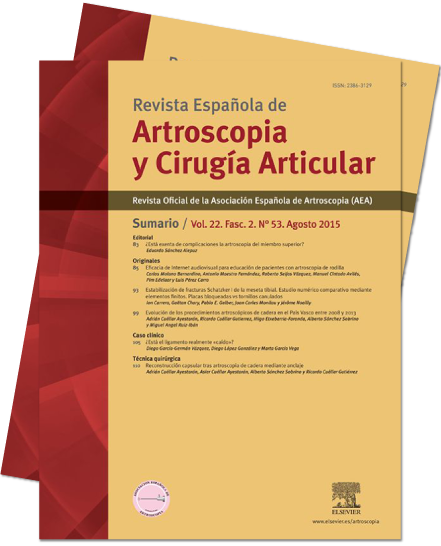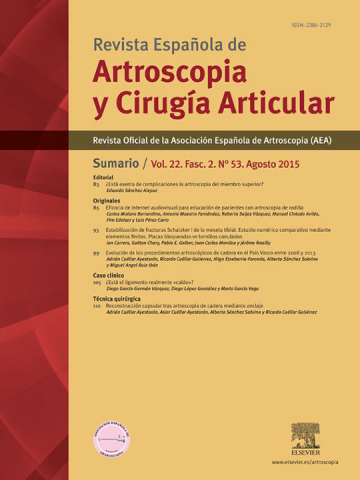Resumen:
El concepto de ligamento cruzado anterior (LCA) «caído» parte de la errónea concepción del LCA nativo a partir de la orientación, tensión y aspecto de una plastia transtibial del LCA, no anatómica, y en posición vertical. Se puede llegar a pensar que ese es el aspecto de un ligamento normal. Cuando posteriormente vemos un LCA sano, orientado de forma anatómica e insertado en su huella, podremos pensar que está «caído». La realidad es que esa es su inserción anatómica.
El patrón de tensión del LCA también puede confundirnos, ya que en el ligamento nativo varía en el rango de flexoextensión, mientras que las plastias no anatómicas, al ser isométricas, se verán siempre tensas.
El hecho de que el estudio de la anatomía y las pruebas de imagen se realizan con la rodilla en extensión pero la artroscopia se realiza a 90° de flexión añade confusión a la percepción de la anatomía del LCA sano.
Debemos, por tanto, desterrar el concepto de LCA «caído» y aprovechar para entender mejor la anatomía de la huella femoral, la tensión y la orientación real de ligamento.
Abstract:
The concept of a “fallen” Anterior Cruciate Ligament (ACL) refers to the wrong conception of the native ACL based on the orientation, tension and appearance of a transtibial, non-anatomic, vertical ACL graft. This appearance could be considered as the appearance of a normal ligament. When, later, we see an uninjured ACL, anatomically orientated and inserted in its footprint, we could think of it as “fallen”. The fact is that that is its anatomic insertion.
The tension pattern can also confuse us because that of the native ligament varies throughout the range of flexion-extension whilst non-anatomic grafts, being isometric, are always tense.
The fact that the study of the anatomy as well as imaging tests are done with the knee in full extension but arthroscopy is performed with the knee in 90° of flexion adds confusión to the perception of the uninjured ligament.
We must discard the concept of the “fallen” ligament and take this opportunity to better understand the anatomy of the femoral footprint, the tension, and the real orientation of the ligament.
Keywords:
Anterior cruciate ligament
Anatomy
Partial tear
Magnetic resonance imaging
Perception




